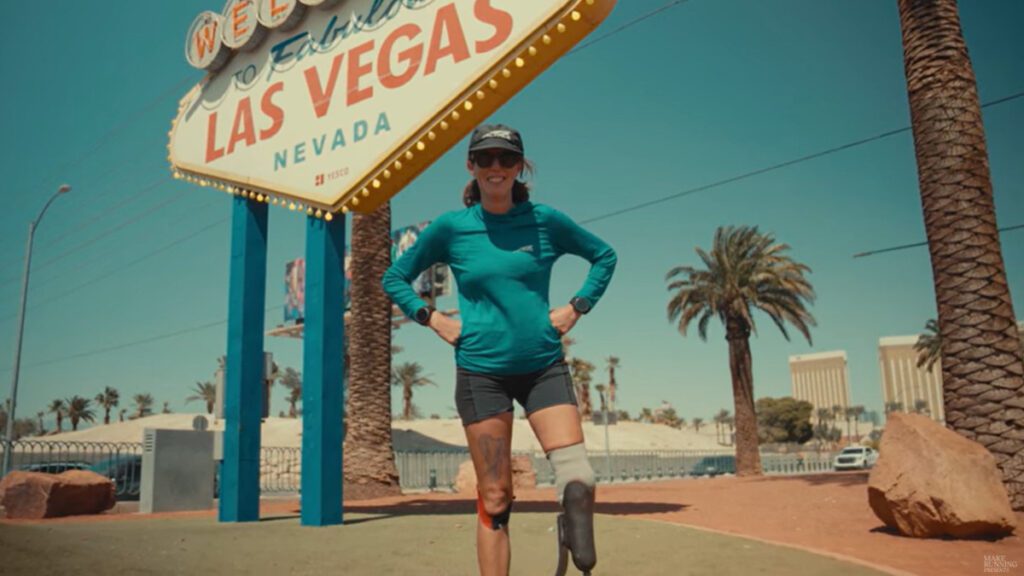The film “No Turning Back” offers an intimate look into the journey of Jacky Hunt-Broersma, an amputee runner who is pushing the boundaries of endurance sports. As she prepares for The Speed Project, an unsanctioned race spanning approximately 300 miles from Los Angeles to Las Vegas, viewers gain insight into the nuances of ultrarunning, particularly how they intersect with the challenges faced by athletes with disabilities.
Hunt-Broersma’s accomplishment as the first amputee to complete the TransRockies Run in 2019 and her subsequent achievements in running 100 miles on a treadmill in under 24 hours demonstrate a significant evolution in the capabilities of amputee athletes. Her participation in The Speed Project symbolizes not just a personal challenge, but an exploration of the extremes of both mental and physical endurance within a community that values individual journeys as much as collective camaraderie.
Ultrarunners understand that successful navigation of long-distance events requires meticulous planning and adaptability. The Speed Project’s structure allows for a customizable approach to racing; runners can choose their own routes, determine crew stops, and rely on self-navigation. This autonomy parallels tactical considerations for ultrarunners preparing for more regulated mountain courses, where course familiarity can be crucial to performance. For instance, simulating race-day conditions during training allows runners to test gear, nutrition strategies, and pacing in a context similar to that of their target events.
Hunt-Broersma’s narrative illustrates the importance of community support in ultrarunning. Her crew, composed of family members, highlights the integral role that assistance and organization play during long races. Runners preparing for mountain ultras should consider not only their own training but also how they can ensure effective support during racing. This encompasses logistical planning—such as how many aid stations they can reach—and understanding the influence of crew dynamics on mental resilience and physical recovery.
As Hunt-Broersma tackles obstacles unique to amputee runners, her experiences shed light on common challenges faced by all ultrarunners, such as managing physical strain and equipment malfunctions. Notably, the extreme heat affects not just hydration strategies but also gear reliability; for individuals like Hunt-Broersma, this translates into checks on both running blades and traditional footwear. The significance of equipment performance can’t be understated—runners should be aware of how temperature can affect fabric behavior, grip evolution, and overall gear integrity during high-difficulty environments.
From a mental perspective, Hunt-Broersma’s reflections touch on a critical strategy for ultrarunners: accepting that challenges and setbacks will arise during any long-distance race. Cultivating a mindset that anticipates difficulties, while also planning tactical responses, enables athletes to maintain focus and composure. This adaptability is essential in mountain ultras, where terrain and weather can shift dramatically.
Hunt-Broersma’s approach to overcoming the perception of disability—by defying assumptions and challenging expectations—can reverberate with ultrarunners, who continually confront the physiological and psychological limits inherent in their sport. The film encourages a reassessment of what defines capability in endurance running, pushing athletes to question not only their limits but also the labels imposed upon them.
As the narrative progresses, there emerges a palpable sense of community that underscores these extreme races; the finish line serves as a convergence of varied journeys. While Hunt-Broersma finishes The Speed Project in just over six days, the camaraderie among the participants reaffirms that while personal performance remains vital, the shared experience of navigating difficult landscapes and exertion enhances the journey.
The feasibility of maintaining a personal best amidst such trials mirrors the strategies utilized during mountain ultras. Athletes should closely monitor their pacing and embrace the reality of shared struggles, which can not only alleviate mental stress but also improve performance through collective momentum.
Ultimately, as runners prepare for their respective mountain ultras, they must recognize the balance of individuality and community, as illustrated not only in Hunt-Broersma’s story but across the ultrarunning landscape. The key takeaway involves understanding the interdependence of personal goals and external support, paired with the tactical flexibility necessitated by challenging environments. Embracing this mindset will equip athletes to face their own races with resilience and an informed approach, ensuring they are prepared for whatever the mountains may bring.
